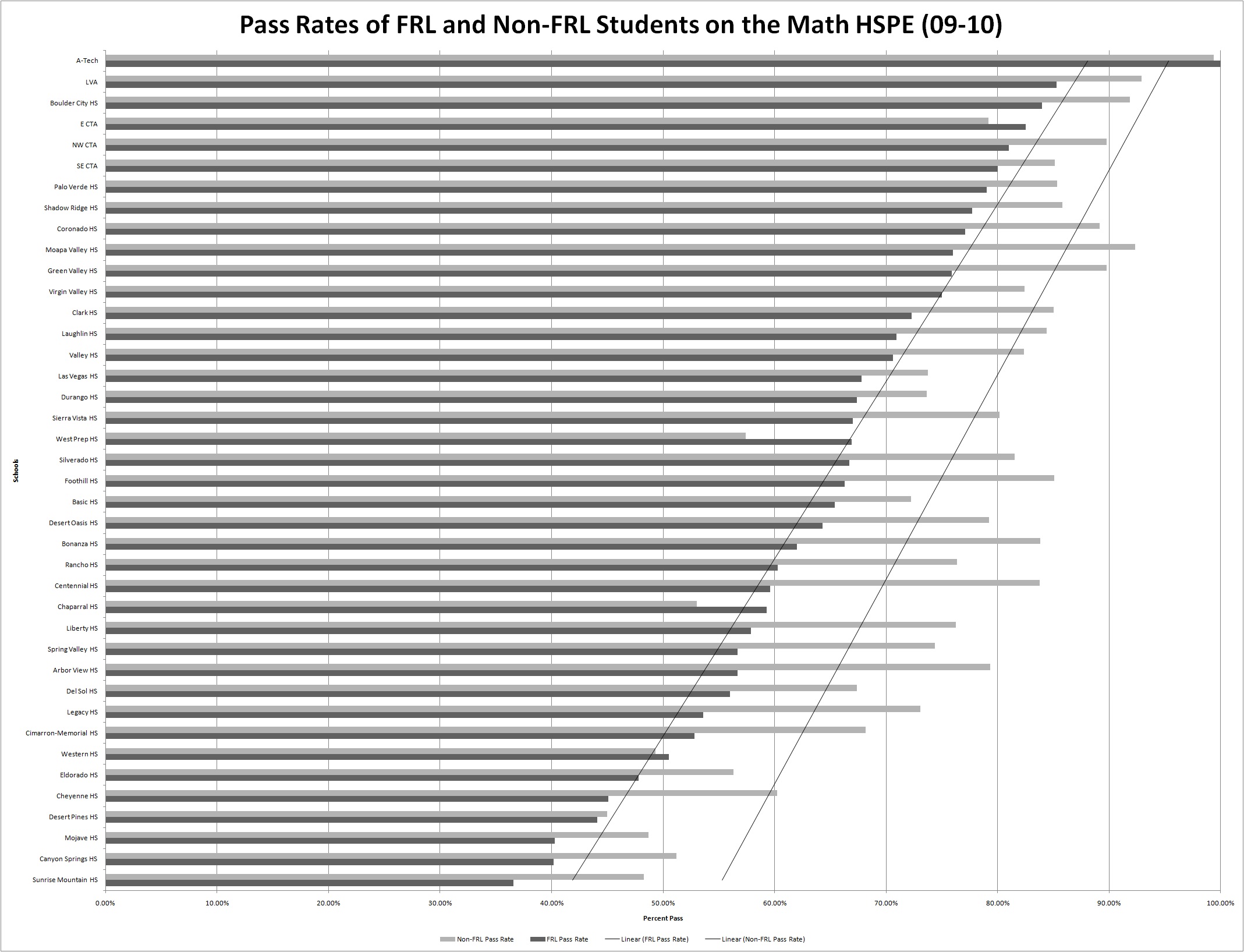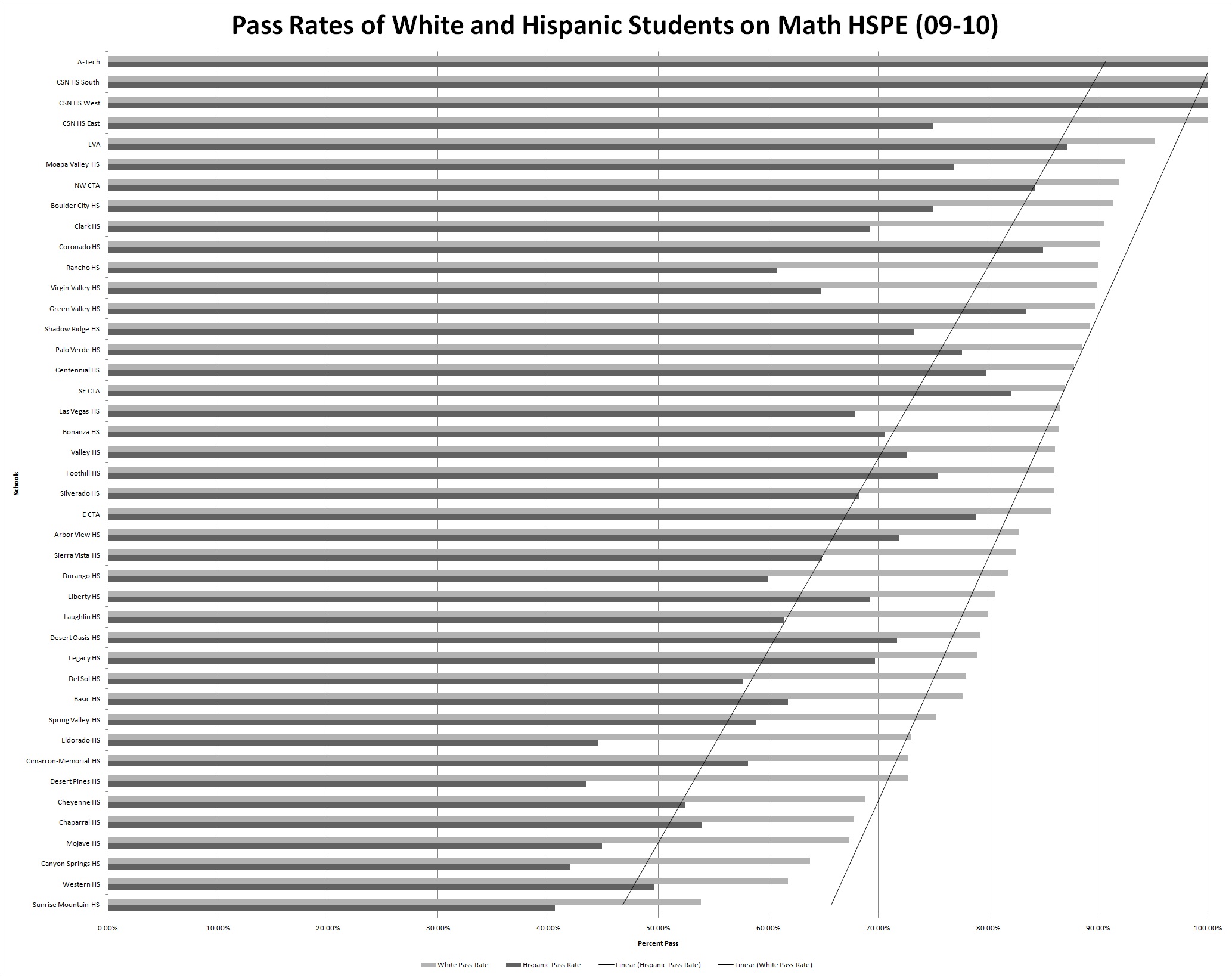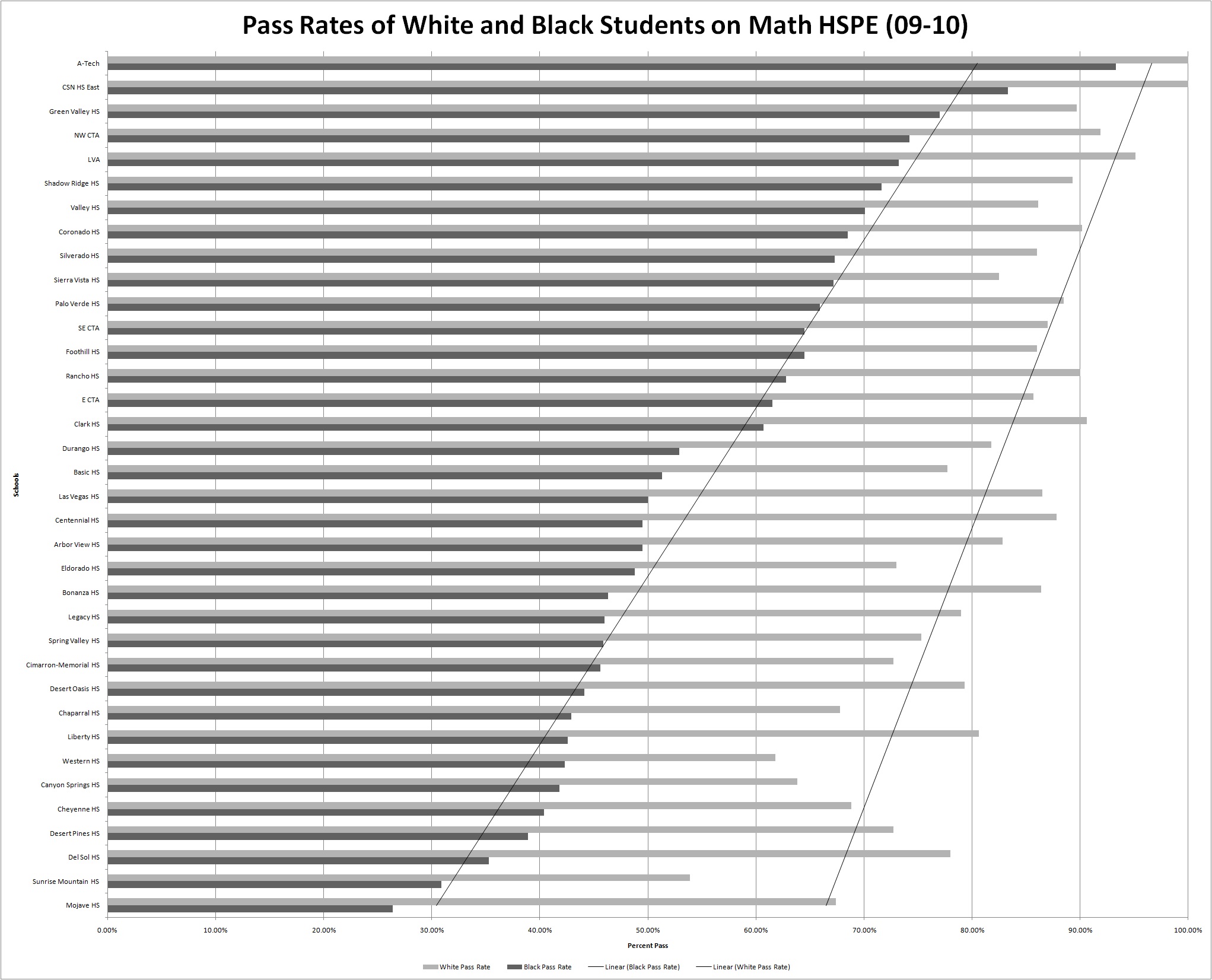How education excellence for all closes achievement gaps
To close income and racial achievement gaps, Nevada should follow Florida’s example
- Tuesday, August 2, 2011
Even a cursory look at education statistics in Nevada and around the country shows a startling achievement gap between Hispanic and African-American students and white students. Understandably, this gap has been the focus of countless news articles, columns and studies. NPRI's analysis of Clark County high schools reveals, however, that as the scores of white students rise, the scores of minority students also climb.
One common explanation offered by scholars to explain this gap is poverty — that is, minorities tend to come from less wealthy families than do white students.
This inspired a comprehensive analysis of every CCSD high school and their pass rates on the Math High School Proficiency Examination (HSPE) from the 2009-2010 school year. An examination of the pass rates of students qualifying for Free and Reduced Lunch (FRL) and their non-FRL peers shows that, as the scores of non-FRL students rose at individual high schools, the scores of FRL students at those same schools rose, as well.
FRL students pass at higher rates when attending schools where the school's non-FRL students also pass more frequently, and vice-versa. At some schools, this even means a considerably diminished achievement gap between FRL and non-FRL students. (The trend also holds strongly when examining scores on the Reading HSPE.)
In fact, at some high schools, FRL students will even score higher than those who do not qualify for free and reduced lunch at the same high school. Examples include A-Tech, Chaparral High School, Western High School and West Prep.
If poverty were the whole story, this would not be possible.
Interestingly, though, we arrive at the same result when looking at the scores of black and Hispanic students on the same test.
At any school where Hispanic and black students performed well, white students were also performing well (compared to the white students at other high schools). This usually — but not always — worked out in the opposite direction. That is, most of the time, if white students were passing at high rates at a given high school, black and Hispanic students were also performing higher.
In fact, regardless of whether the graphs are arranged by white achievement or by the achievement of the minorities, the trend is that white and minority student achievement rise together with the achievement of minority students rising more quickly, thereby decreasing the gap.
Statistical analysis reveals a strong correlation (.88 and .85) between the scores of Hispanic and black students and their white peers, respectively. Analysis also indicates that 78 percent and 72 percent of the respective gaps can be explained (using the coefficient of determination, or R²) by the the movement of one of the groups - that is, 78 percent of the change in the Hispanic pass rates can be explained by the movement of the white pass rates, and so on.
(While this trend also holds somewhat for the Reading HSPE, neither the correlation nor the coefficient of determination are as strong as they are for the Math HSPE. Notwithstanding, it does not detract from the trend on the Math HSPE to admit that other factors may more significantly impact the small achievement gap — on average, about 7 percent between white and black students and 4 percent between white and Hispanic students — on the Reading HSPE.)
The experience of Florida also adds evidence to the idea that increasing student achievement for all will also decrease the achievement gap.
As Dr. Matthew Ladner, an education researcher for the Foundation for Educational Excellence, regularly points out, since 2003, Florida has made the greatest strides of any state in narrowing its racial achievement gap. By comparing black and white achievement on all four major NAEP assessments (fourth grade math and reading and eighth grade math and reading) for 2003 and 2009, Ladner found that Florida has narrowed the achievement gap between black and white students more than any other state.
A similar analysis of the most recent NAEP data produces a strikingly similar conclusion. Scores of the white, Hispanic, and African-American subgroups on the four main NAEP assessments in each state between 2003 and 2009 allow us to calculate the size of the racial achievement gap for each of those years. We can also calculate the growth rate of the achievement gap on each assessment and the average growth rate of the achievement gap in each state. The results show that Florida's achievement gap between blacks and whites is shrinking the quickest of any state, while its achievement gap between whites and Hispanics is shrinking the fifth quickest.
Negative scores indicate that the achievement gap is decreasing.
The narrowing of the racial achievement gap in Florida has not come as the result of lowered achievement by white students — quite the opposite. In the last 12 years, student achievement in Florida has increased dramatically, after then Gov. Jeb Bush introduced a series of reforms that included school choice programs that allow 28,000 low-income students and over 21,000 students with disabilities to receive vouchers for the school of their choice. Other reforms included the grading of public schools by letters, the largest virtual school in the country, improvements in the alternative certification program, and the retention of third-grade students who cannot read proficiently.
It's just that although white students made progress, minority students made even greater gains.
Indiana is now on the fast track to obtaining (and perhaps even exceeding) Florida's reforms. During the most recent legislative session, Indiana ended "last in, first out" (LIFO) policies that favored older teachers regardless of competence and enacted a merit-based pay system. In addition, the legislature passed a measure allowing most poor students and many middle-class students to use vouchers paid by the state to attend the school of their choice — a program that extends well beyond Florida's.
In the 2011 Legislative Session, Nevada passed minor education reforms, such as ending LIFO and making it easier to fire a bad teacher, although the process still takes at least three years. These are a far cry away from the reform measures Florida and Indiana have passed, and, as a result, it is unlikely that our educational achievement will change significantly.
If Nevada's lawmakers are serious about increasing student achievement and narrowing the income and racial achievement gap, they would be would be wise to copy the reforms that Indiana and Florida have enacted.
Alexander Cooper is a policy intern with the Nevada Policy Research Institute. For more visit http://npri.org/.









